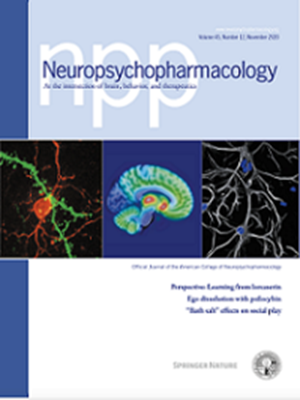Relative effectiveness of antidepressant treatments in treatment-resistant depression: a systematic review and network meta-analysis of randomized controlled trials
IF 6.6
1区 医学
Q1 NEUROSCIENCES
引用次数: 0
Abstract
This systematic review and network meta-analysis (NMA) sought to compare different antidepressant treatments for treatment-resistant depression (TRD) in order to facilitate evidence-based choices. A literature search of PubMed, Cochrane Library, and Embase from inception until April 13th, 2023 identified randomized, controlled trials (RCTs) of adults with depression who had not responded to at least two antidepressant trials; all RCTs had ≥10 participants per study arm, and participants with bipolar or psychotic depression were excluded. The Cochrane Risk of Bias Tool-2 was used to assess study quality. Response rate was the primary outcome measure. Odds ratios (ORs) using a random effects NMA are reported. From 8234 records, 69 RCTs were included in this analysis, encompassing 10,285 participants (5662 F/4623 M) and 25 separate treatments. Six of the 25 treatments demonstrated a higher response rate versus placebo or sham treatment: electroconvulsive therapy (ECT), minocycline, theta-burst stimulation (TBS), repetitive transcranial magnetic stimulation (rTMS), ketamine, and aripiprazole. ORs ranged from 1.9 (95%CI = [1.25; 2.91]) for aripiprazole to 12.86 (95%CI = [4.07; 40.63]) for ECT. Moderate heterogeneity of the model was observed (I2 = 47.3% (95%CI [26.8–62%]). Of the included studies, 12.5% were rated as having high risk of bias, 28.13% as having low risk, and 59.38% as showing some concerns. Several effective treatments for TRD showed robust treatment effects across outcomes (ECT, TBS, rTMS, and ketamine), and others showed promising results for some, but not all, outcomes (minocycline, aripiprazole). These findings may help guide evidence-based treatment choices for TRD. Study Registration: PROSPERO (#CRD42023420584).

抗抑郁药治疗难治性抑郁症的相对有效性:随机对照试验的系统回顾和网络荟萃分析。
本系统综述和网络荟萃分析(NMA)旨在比较治疗难治性抑郁症(TRD)的不同抗抑郁药物治疗,以促进循证选择。PubMed、Cochrane Library和Embase从成立到2023年4月13日的文献检索发现,随机对照试验(RCTs)中至少有两种抗抑郁药物试验没有反应的成年抑郁症患者;所有随机对照试验每个研究组≥10名受试者,排除双相或精神病性抑郁症患者。采用Cochrane Risk of Bias Tool-2评估研究质量。有效率是主要的结局指标。使用随机效应NMA的优势比(ORs)被报道。从8234条记录中,69项随机对照试验纳入本分析,包括10,285名参与者(5662 F/4623 M)和25个单独的治疗。25种治疗方法中的6种与安慰剂或假治疗相比显示出更高的反应率:电痉挛治疗(ECT)、米诺环素、脑电波刺激(TBS)、重复经颅磁刺激(rTMS)、氯胺酮和阿立哌唑。or从1.9 (95%CI = [1.25;2.91])为12.86 (95%CI = [4.07;40.63])。模型存在中度异质性(I2 = 47.3% (95%CI[26.8-62%])。在纳入的研究中,12.5%被评为高偏倚风险,28.13%被评为低偏倚风险,59.38%被评为有一定关注。几种有效的TRD治疗方法(ECT、TBS、rTMS和氯胺酮)在所有结局中都显示出强劲的治疗效果,而其他治疗方法(米诺环素、阿立哌唑)在一些但不是全部的结局中都显示出有希望的结果。这些发现可能有助于指导循证治疗TRD的选择。研究注册:PROSPERO (#CRD42023420584)。
本文章由计算机程序翻译,如有差异,请以英文原文为准。
求助全文
约1分钟内获得全文
求助全文
来源期刊

Neuropsychopharmacology
医学-精神病学
CiteScore
15.00
自引率
2.60%
发文量
240
审稿时长
2 months
期刊介绍:
Neuropsychopharmacology is a reputable international scientific journal that serves as the official publication of the American College of Neuropsychopharmacology (ACNP). The journal's primary focus is on research that enhances our knowledge of the brain and behavior, with a particular emphasis on the molecular, cellular, physiological, and psychological aspects of substances that affect the central nervous system (CNS). It also aims to identify new molecular targets for the development of future drugs.
The journal prioritizes original research reports, but it also welcomes mini-reviews and perspectives, which are often solicited by the editorial office. These types of articles provide valuable insights and syntheses of current research trends and future directions in the field of neuroscience and pharmacology.
 求助内容:
求助内容: 应助结果提醒方式:
应助结果提醒方式:


